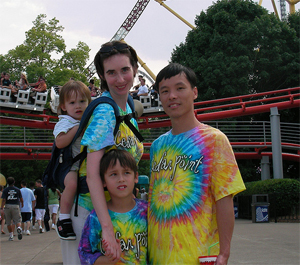
Resources  is safe for children up to 40 pounds and the Beco Butterfly carrier
is safe for children up to 40 pounds and the Beco Butterfly carrier up to 45 pounds. We did not want to be burdened with a stroller (we’ve seen far too many children crying in strollers while waiting in line), and we knew that the key to success would be frequent breaks. Once we understood our goals and our ground rules, the rest of the planning fell into place.
up to 45 pounds. We did not want to be burdened with a stroller (we’ve seen far too many children crying in strollers while waiting in line), and we knew that the key to success would be frequent breaks. Once we understood our goals and our ground rules, the rest of the planning fell into place.
How To Enjoy an Amusement Park With Your Special Needs Child
Who would be stupid (or crazy) enough to visit an amusement park with a special needs child and an extremely fussy toddler? ME! I’m stupid and crazy! I’m married to a roller coaster enthusiast. I don’t care for high-thrill rides myself, but it’s not a question of “when” or “if” my family will be visiting amusement parks this summer. The question is, “Should we get a regular season pass or a Platinum Multi-Park Pass?” I knew the answer to that one before it was even asked. The follow-up question is, of course, “How on earth are we going to pull this off?” Allow me to explain.Therapeutic Goals
I warmed up to the idea of taking my disabled son to amusement parks when I realized that the cost of one hour of physical and occupational therapy was comparable to one full day for our family at Cedar Point or Kings Island. Personally, I’d rather be having fun with my family than sitting in the waiting room at the therapy clinic. Amusement parks offer the opportunity to work on many therapeutic goals:- physical stamina after lots of walking
- matching the pace of a companion
- turn-taking
- verbalizing physical needs
- anticipating patterns of activity
- sharing emotion
- joint attention
- visual tracking and processing
- proprioceptive and vestibular sensory integration
- self-regulation
- reducing sensitivity to noise and temperature and the big goal:
- reducing anxiety while increasing a sense of trust and security.



